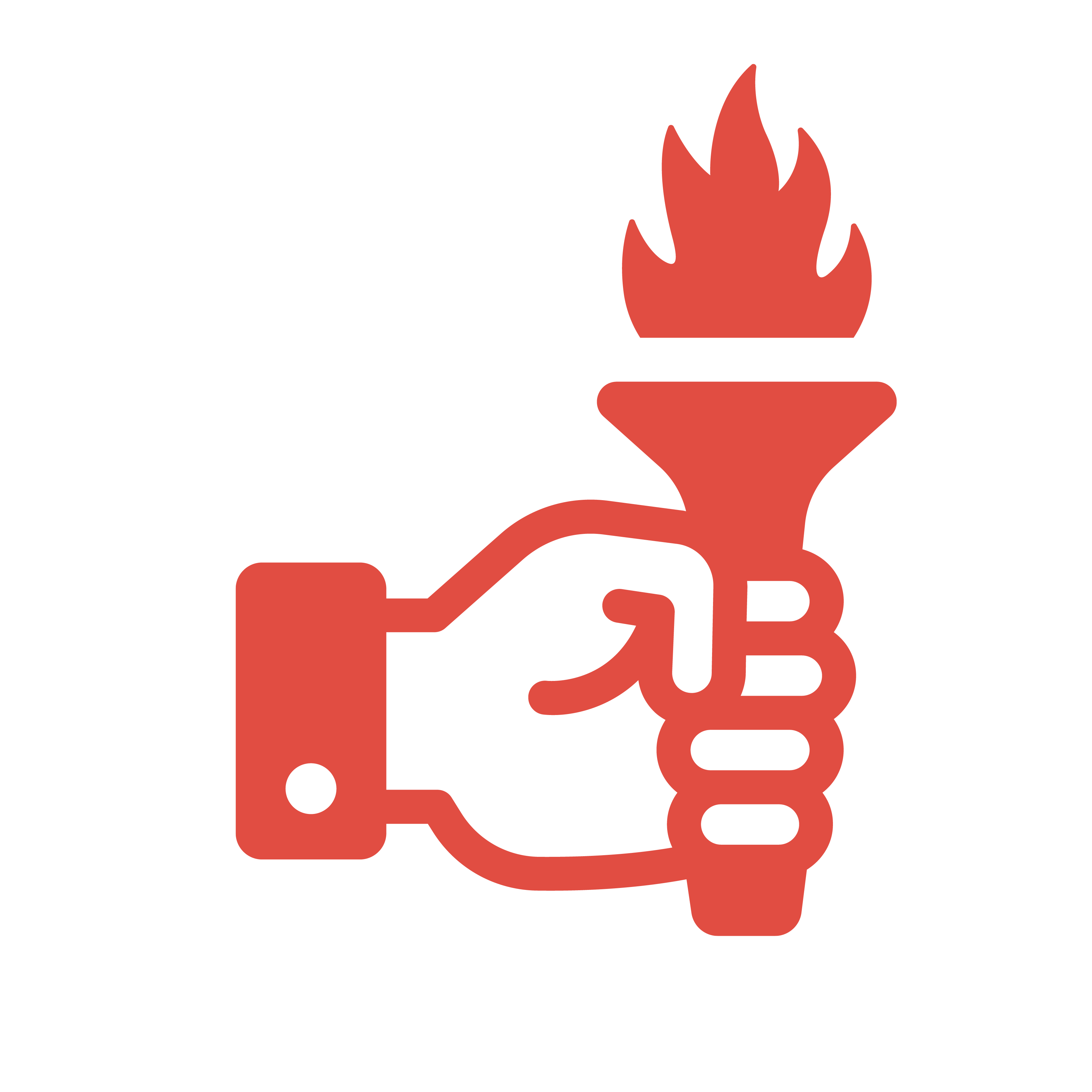Youth Action Board Manual: How to Incorporate Impacted Youth into Your Organization
This manual serves as a resource for organizations, support staff, youth, and young adults, offering guidance on meaningful and equitable engagement of youth with lived expertise in social service spaces.

Introduction
This manual offers guidance to non-profit, mission-driven organizations and public agencies who wish to incorporate the input and participation of impacted youth in their operations. Such an addition, known as a youth action board (YAB), has many benefits both for the hosting organization and the youth themselves, but those benefits depend on informed preparation and engagement. You will find that information in what follows.
After a preliminary discussion of the nature and value of youth action boards, this manual will take you through the preparation and onboarding stages, all the way through the end of your youth cohort’s tenure. These main sections will be presented in a procedural format, recommending steps to take at each stage and, where relevant, key considerations to undertake at each step. Several appendices in a more discursive format close the manual, and cover issues of interest such as compensation, accessibility, and conflict management.
The authors have had experience as members in YABs focused on youth homelessness, and so some of our examples will come from that issue area; but any mission-driven organization will find YABs and the information in this manual relevant.
What Is a Youth Action Board, and Why Build One at Your Organization? | Lay the Groundwork for Your YAB | Recruit Effectively and Equitably | Onboard Collaboratively and Begin the Work on the Right Foot | Important Matters to Consider along the Way | Close Out Your YAB with Closure (and Pass the Torch to the Next Cohort)
 What Is a Youth Action Board, and Why Build One at Your Organization?
What Is a Youth Action Board, and Why Build One at Your Organization?
What a Youth Action Board Is and Does
A youth action board (YAB) is a group of about eight to ten young people with lived experience who provide consultation to an organization, and sometimes to organizations that have partnered with the lead organization. Lived expertise within a YAB may include a variety of backgrounds, or may be more specific, depending on the lead organization’s mission. Youth action board members are compensated for their time spent participating in YAB activities. They generally fall within the age range of 14 to 24, but ages may vary from community to community.
What they do: Through an emphasis on autonomy, trauma-informed approaches, and effective support for young people, YABs yield a number of benefits, for both the host organization and youth participants. These include authentic youth engagement with and valuable stakeholder guidance for the host organization; and for the participants, the development of skills useful in full-time employment, as well as a supportive transition into long-term leadership within the relevant movement and issue areas.
YABs support improvements to youth-centered programs that directly impact them and their peers, and more robust community-driven solutions to homelessness, mental health, and other social issues. Domi Ramos, former YAB member with Clackamas County in Oregon, shared an example of a time she felt her expertise and contributions were valued:
Going to my first conference completely changed my outlook on life and as someone who was dealing with homelessness living in transitional housing it showed me that my life could be more than the experiences I endured. It also created an unbreakable bond within my youth action board. It was a way for us to speak at these conferences and respond to audience Q&As, going as far as to inspire myself and other board members to try and curate our own youth summit.
What a Youth Action Board Can Contribute to Your Organization
When centering lived experiences, we have consistently seen that efforts to end youth homelessness become more effective when diverse voices are included in the room. At the county, state, and national levels, YAB members have played a crucial role in strengthening teams by reviewing grant proposals and participating in the hiring process for new staff, among other contributions. Additionally, young people have taken the lead on national projects and spoken at conferences, where they are recognized as experts in the field.
 Lay the Groundwork for Your YAB
Lay the Groundwork for Your YAB
1. Identify the purpose of your YAB in terms of exchange and objectives.
- For large organizations, identify which department and/or team will be supporting the YAB.
2. Define the role that YAB members will play in your organization, including the purview of their recommendations. A YAB may be established with the goal of supporting the organization with attaining a specific goal—for example, elevating youth voice in the development, implementation, and continuous quality improvement of programming; however, it’s important to consider that best practice is to support a YAB with attaining a level of autonomy and self-determination. “Mission drift” occurs when a YAB and an organization’s goals are not aligned.
3. Establish the eligibility criteria for potential YAB recruits. Direct experience with your mission and/or the projects under YAB consultation and opportunity benefits should be the prime considerations, but seek to be specific as well as inclusive.
4. Identify the source of funding.
- Establish the budget.
- Determine the size and tenure of your YAB.
5. Identify equitable pay standards by consulting other YABs and lived-experience boards, and establish cohort member stipend amount. See Appendix A for a relevant discussion of equitable pay and direction to resources.
6. Determine type and frequency of meetings. Meetings may be in-person or held virtually. Keep in mind that some of your most beneficial potential board members may also be the ones with the least flexible schedules: variety and flexibility are key.
- If meeting in person, designate a meeting space and ensure that other office space allocations are sufficient (e.g., the number of accessible bathrooms, amount of closet space, and seating).
7. Designate a dedicated liaison staff position or staff positions, and set aside clearly defined, YAB-specific labor hours for those liaisons. A common breakdown point for initiatives like these is insufficient labor time on the part of the host organization. Launching a YAB is not merely complementary to your organization: it is additive, and it will almost certainly require an expansion of capacity and not merely a rearrangement of it. Be realistic, and set out to be honest from the start with your YAB’s members.
The person in the liaison staff position will ideally possess lived experience. This individual will work closely with the YAB to support meeting-to-meeting operations,1 including the following:
- Coordinating recruitment efforts.
- Setting meeting dates and times.
- Establishing structure.
- Supporting compensation of YAB members.
- Identifying training needs.
- Troubleshooting challenges that may come up.
- Building trust and community with the young people.
- Serving as a bridge and advocate.
8. Account for provisions and accommodations, including food and accessibility needs. Your YAB members themselves will be the best source for these, but you can prepare for their arrival by consulting Appendix B, on accessibility.
- By acknowledging the realities and potential barriers youth and young adults face, we can ensure that opportunities do not inadvertently become burdens. Organizations should focus on thoughtful planning, equitable resource allocation, and creating supportive environments that empower individuals.
9. Determine how you will transfer payment to cohort members. Flexibility and accessibility are essential. Not all of your YAB members will have a bank account, for example.
- In the past, YABs have been successful when using direct deposit, Venmo, Cashapp, Zelle, and gift cards. Flexibility is key.
- Consistency and how often members are paid need to be communicated with candidates ahead of time.
For more detailed information on compensation, see “Youth Compensation Legal Guide” by Katie Meyer Scott, Jeremy Penn (National Homelessness Law Center), Jacq Tate (TrueSelf LLC), Siena Cornacchini, Jeff Hill (Alston & Bird).
10. Designate technological assets (e.g. virtual meeting platform, document format, document storage, email addresses) and sufficient labor hours for technical support as needed. These should be decided in coordination with the goals you have determined for your collaboration with the YAB, and should not assume that YAB members will be able to consistently access or provide technology themselves. And as with your considerations about liaison staff, remember that the technological commitments will be additive: you will likely need to expand capacity, and not simply rearrange it. For additional guidance, refer to Appendix B, on accessibility.
Example: Clackamas County supported its YAB members with flexible access to tablets and wifi. One of their YAB members was struggling to join the weekly meetings due to lack of technology and wifi, and with the support of the YAB liaison, the county was able to pay for wifi and loan this individual a tablet so that they could participate fully in meetings.
Establish accountability commitments and prepare relevant staff.
1. Outline an explicit protocol for how the organization will consider YAB recommendations.
- Emphasize action.
- Invite YAB members to take part in discussions of their recommendations.
- Stay open to changes in this protocol after the YAB has been onboarded.
- Ask yourself: is the staff at our organization well-versed in adultism, and if not, what training can we attend to bolster our knowledge? See Appendix C for more information on encountering adultism.
2. Outline an explicit protocol for how the YAB will make its recommendations and how the organization will communicate its considerations and decisions in a timely manner.
- When members give feedback and recommendations, be honest and clear about the next steps.
- Build on trust and open communication. YAB members should feel empowered to share their opinion and recommendations.
- Bring ideas to the meetings and create feedback opportunities.
- Follow through by letting the group know what happened with recommendations and how they have impacted the work. Efforts to keep the team in the loop do not end after an initial recommendation session.
3. Ensure a clear line of communication between YAB members and organization leadership.
4. Arrange for staff training for liaison positions ahead of time as needed.
How Clackamas County Laid the Groundwork for Their YAB
In Clackamas County, the YAB liaison partnered with technical assistance (TA) providers from True Colors United and the Corporation for Supportive Housing (CSH) to lay the groundwork for its youth action board, which was established to support its Youth Homelessness Demonstration Program (YHDP). These TA providers supplied templates to support laying the groundwork based on their experience uplifting YABs in other YHDP communities. Once YAB members were recruited, TA providers were also present during initial meetings.
 Recruit Effectively and Equitably
Recruit Effectively and Equitably
1. Initiate and sustain recruitment efforts, which may include recruiting youth and young adults who have participated in the organization’s programming.
- Youth may be recruited from other local youth-serving organizations. Recruiting young people who are already employed by social service organizations can add a valuable perspective to a youth action board.
- Organizations should strive to achieve a balance of youth with different backgrounds to support equitable representation on a YAB.
- During recruitment efforts, it’s important that the lead organization and/or facilitator are transparent about the organization’s reasons for establishing a YAB and their objectives from the partnership.
2. Create an application process that is accessible to youth and young adults. An example of this could be a Google Form that is shareable via a QR code, as well as printed versions.
3. Design promotional materials to share with community partners, schools, state offices, and other local spaces focused on young people.
4. Attend outreach opportunities around the community the YAB will be representing (in-person, online, at community-based organizations, schools, etc.).
- Plan and host activities related to your organization’s purpose for establishing a YAB that can be conducted during outreach efforts to support recruitment. Make these fun for potential members!
5. Screen applicants utilizing the eligibility criteria agreed on by the organization.
6. Conduct interviews with interested parties.
-
- Interviews should be designed to be professional yet supportive. Keep in mind that this may be an applicant’s first experience in an interview.
- Provide any questions to applicants prior to the interview.
- Conduct interviews in a variety of formats (in-person in the community, online, over the phone) to support youth with barriers to traditional interview methods.
 Onboard Collaboratively and Begin the Work on the Right Foot
Onboard Collaboratively and Begin the Work on the Right Foot
1. Set the schedule for initial meetings in consultation with YAB members.
- Timing and format may be changed later depending on YAB feedback.
- Establish a regular meeting schedule with YAB members that accommodates their availability.
- The first few meetings should incorporate ice-breaking and team-building activities.
2. Determine a provisionary protocol for how YAB decisions will be made. A consensus process is essential, but different consensus models may work better for different-sized groups. See “Youth–Adult Partnership Rubric” for resources on recommended methods. This discussion should be youth-led and facilitator-guided.
3. Review your agency’s goals for initiating a YAB, as well as documents that have been designed to support the YAB thus far, the budget, and discuss any partnerships with other organizations that have been formed to support the YAB.
- Implement changes based on feedback wherever possible.
4. Draft foundational documents in collaboration with YAB members, including group agreements, guiding principles, a charter, mission/vision statements, and/or memorandums of understanding. It may be helpful to provide examples of the lead organization’s versions of these documents. Partnerships with established YABs from other communities and technical assistance providers can also provide additional resources from which to draw.
- Utilize a Google Docs folder or other platform to manage shared documents. Determine who has access to it and who does not.
Example: the Vermont Coalition to End Youth Homelessness (VCEH) created the following charter to support their community’s youth action board.
5. Establish methods of communication and ensure that these are accessible to all members.
6. Facilitate or arrange to provide training on the following:
- Technology platforms (Zoom, Teams, Meet, Google Drive, Microsoft Office, etc.).
- The primary organization and/or relevant systems (e.g. housing, health care, mental health).
- Strategic sharing and trauma-informed practices.
7. Create system to support peer check-ins:
- Peer check-ins may be member to member or member to liaison.
- Peer check-ins can be scheduled routinely to support relationship-building and resource connection.
- Encourage YAB members to collaborate on projects in pairs when applicable.
8. Identify third parties to assist with mediation and conflict resolution in the event conflict occurs.
- Set norms in dealing with conflicts (interpersonal and external conflicts between young people, adult partners, and young adults, as well as young people and the organization, etc.).
- Establish mutually agreed-on expectations for holding one another accountable for the set norms above, such as bringing up issues as an agenda item (in-the-moment conversation and feedback).
For more guidance on navigating conflict, see Appendix D.
 Important Matters to Consider along the Way
Important Matters to Consider along the Way
Meaningful Youth Engagement
One of this paper’s authors once heard a story from a young person that sheds light on what makes youth engagement truly meaningful. They shared their experience of being hired to assist with research in the youth homelessness space. When they approached the person who hired them to ask about their responsibilities, however, they were told that there were no tasks for them to do at the moment, but they’d be contacted if something came up. When the young person asked why they were hired in the first place, if there were no tasks associated with their role, they heard that their presence was simply needed as a “grant requirement.”
Young people with lived expertise should never be tokenized in this way. Their insights and experiences are invaluable, and must be meaningfully integrated into decision-making. Look at Appendix E for more insight on meaningful youth engagement.
“My advice to organizations seeking to support meaningful leadership development and youth empowerment with a youth action board would be to listen to the needs of the youth. Meet them with their needs and don’t limit or restrict how much involvement they are willing to give. Understanding that lived experience comes with knowledge and navigation through skills, as well as the drive to apply them. One thing I respected about our facilitator was his ability to step back and encourage our board members to see how far they can get projects accomplished without him taking control. Of course he would step in and guide us or show us which pathway would be the best course of action. However, if he would have restricted our level of control I believe we wouldn’t have accomplished nearly as much as we did within a year.”
—Domi Ramos, former youth action board member with Clackamas County in Oregon
1. Facilitate regular conversations between YAB members and organization leadership.
2. Create and maintain feedback loops between YAB members, facilitators, the host organization, and external partners.
3. Consistently identify and present pathways for leadership development. This may include various forms of training, as well as positions within an organization.
4. Invite YAB members to participate in the organization’s hiring processes, such as interviews, application screening, and review.
5. Invite YAB members to participate in and learn about various aspects of the primary organization’s operations. Examples include attending meetings, workshops, events, and trainings intended for the primary organization’s staff.
6. Create intentional spaces for collaboration and reimagining of current organization policies and practices.
7. Present YAB members with options for projects to engage in and support participant choice.
Trauma-Informed Practices
1. Establish agreements to avoid the use of acronyms and technical jargon that may present barriers to meaningful engagement. See more information in Appendix B on accessibility.
2. Develop agreements concerning language usage that are non-stigmatizing and/or exploitative. This may include trigger warnings and conversations about how YAB members would like to be referred to.
3. Facilitate regular group and one-on-one conversations about accessibility. Refer to Appendix B.
4. Facilitate regular check-ins between facilitator and participants to support goal-planning.
 Close Out Your YAB with Closure (and Pass the Torch to the Next Cohort)
Close Out Your YAB with Closure (and Pass the Torch to the Next Cohort)
Job and Career Pathways
1. Share internal and external job opportunities with YAB members.
2. Facilitate general conversations with YAB members about their career goals. Create opportunities while they are part of the group to build relationships with people in the movement and build their skills.
Domi Ramos, a former YAB member with Clackamas County in Oregon, recalls,
I feel the most positive outcome with my participation in a youth action board is the life skills I acquired alongside the work experience. I was guided into applying myself to different roles and responsibilities such as scoring housing grants for HUD, facilitating a workshop on the importance of youth involvement, and participated in a panel discussion at a youth led conference. These are skills that I otherwise would have never considered, or thought would be something I not only was interested in, but excelled at. This led me to apply myself further into the field of social work by obtaining credentials that would help me get a career.
One leadership opportunity that sticks with me is stepping into the chairman position, where I learned how to be an effective leader with compassion, empathy, and the ability to inspire my fellow board members to believe within themselves. Really seeing these individuals step outside the comfort of what they know to learn, and grow all because they felt supported by me that even if they ran into a situation they may not know how to solve they could always turn to me. This created strong bonds and helped us achieve so much due to the open communication and authentic partnership we curated.
As members are approaching the YAB’s maximum age limit, facilitate more intentional one-on-one conversations about how the facilitator and organization can support them with working towards their career goals. Support YAB members with identifying a plan that is specific, measurable, achievable, relevant, and time-bound (SMART).
Authentic lived experience goes beyond simply having people with lived experience in the room: it’s about empowering them to drive change, ensuring their long-term job security, and creating a supportive work environment. The organization supporting a YAB should also do their best to incorporate opportunities for fun, and encourage YAB members to challenge the status quo and embrace new challenges and opportunities their own way.
Youth action boards are a powerful opportunity to elevate and empower youth voices with lived experience, support career pathways, and improve an organization’s systems, all of which involves intentional work to foster equity, inclusion, and positive system change within your organization and beyond.
The ideas discussed in this manual should be implemented in conjunction with technical assistance providers and organizations with experience supporting youth action boards.
Appendix A: Equitable Pay
Equitable compensation is essential in acknowledging and respecting the value of individuals with lived experience, particularly within YABs and similar initiatives. To ensure fairness, organizations should prioritize paying participants on time and offer flexibility in payment methods, such as checks, direct deposits, or gift cards, accommodating each YAB member’s preferences whenever possible. Clear and accessible contracts and agreements should be provided to YAB members, using language that is easy to understand and encouraging them to read the documents thoroughly and ask questions before signing. This transparency ensures that all members feel confident and informed about the terms of their compensation.
Organizations must also make sure that compensation for lived experience aligns with industry standards and is comparable to that offered to other YABs or lived-experience boards within the same region. Being transparent about the potential tax implications of the compensation, along with offering access to finance representatives for any clarifications, fosters trust and accountability. By upholding these standards, organizations demonstrate respect for the contributions of individuals with lived experience and create an environment of fairness and equity where all members are empowered to contribute without fear of being undervalued or overlooked.
If organizations are interested in engaging youth and young adults with lived experience, but haven’t secured funding, they should continue to explore avenues to secure funding and postpone plans to start a YAB. Consulting based on one’s lived experience should be compensated, and if payment isn’t possible, youth and young adults shouldn’t be asked to contribute for free.
Appendix B: Accessibility
As defined by the University of New Hampshire, “Accessibility refers to the degree to which materials, spaces, or experiences are designed to allow for an individual to participate and contribute equitably. Supporting accessibility is the shared responsibility of staff and organizations supporting youth action boards. A YAB’s accessibility should be assessed on a regular basis by the organization, the facilitator, and youth action board members. If a YAB member raises a concern regarding accessibility, organizations should discuss what accommodation(s) can be made to support equitable participation. A timeline should be established, and the facilitator should check in with the YAB member as the issue is being addressed and afterward, confirming that all parties feel the accessibility issue has been resolved. If the organization encounters barriers to resolving an accessibility issue, it’s recommended that they consult a technical assistance provider with experience supporting youth action boards.
Here are some important considerations:
Expense Coverage: Organizations should ensure that resources are allocated to cover all expenses related to the individual’s participation. This includes transportation, lodging, meals, and any other relevant costs. Without such support, participation may be unattainable for many individuals. For example, when organizing a policy roundtable with lived expertise, Next100 paid for participants’ meals and lodging and made sure their expense needs were met.
Child Care Support: For individuals with caregiving responsibilities, providing access to child care services or offering stipends to offset the cost of child care is crucial. This consideration can decide whether or not someone can fully engage in the opportunity.
Transportation Access: Offering transportation options, such as ride-sharing services, mileage reimbursement, or pre-paid tickets for public transit ensures that attendees can arrive safely and on time.
Anticipate Individual Needs: Trauma-informed practices involve a proactive approach to understanding and meeting the diverse needs of participants. This means going beyond basic logistical support to address individual preferences and accommodations.
Dietary Restrictions and Accessibility of Event Spaces: Ensuring that meals align with dietary restrictions and that venues are accessible to individuals with disabilities demonstrates a commitment to inclusivity.
Pre-Event Check-Ins: Taking the time to personally connect with participants before an event or large meeting allows organizations to identify and address specific needs. During a Next100 policy roundtable in the fall, we led trust-building one-on-one check-ins before the event, creating space to get to know each person, take their questions, and foster a personal relationship.
Technical Language: Youth action boards are most commonly established within health and social services organizations. In these fields, professionals often use acronyms to abbreviate complex technical jargon with the intention of saving time and maximizing efficiency. However, for youth and young adults (and frankly anyone new to the field), acronyms can engineer the opposite effect, making conversations harder to follow and requiring further explanation—ultimately increasing the time spent on a specific topic. Acronyms can also contribute to an environment where individuals who are unfamiliar feel a sense of “othering” or stigmatization, making them less likely to engage in and/or return to a meeting. Organizations and facilitators can support accessibility by doing the following:
- Limit or stop your own use of acronyms and ask partners to follow suit.
- Establish a simple method for anyone in a meeting to identify that an acronym has been used and therefore needs to be defined (“Acronym Alert”).
- Provide a list of commonly used acronyms in the field or community and review it with YAB members ahead of time.
In our communities, we have found that organizations leading by example can have a domino effect that reduces acronym use across a system significantly.
Technology: Since the start of COVID-19 pandemic, virtual meetings spaces have increasingly dominated workplace communications. Different organizations also utilize different platforms to host meetings, create and share documents, and conduct business. To ensure a non-exclusionary approach to technology, organizations should do the following:
- Identify funds and/or resources to assist with technology expenses (wifi, devices, software, etc.) and determine how and when this will be utilized.
- Identify software and/or platforms that may be utilized by YAB members and provide training.
- Determine virtual meeting etiquette that is agreed on by all parties. For example, are meeting attendees expected to be on-camera at all times? Are there circumstances where exceptions can or should be made?
Appendix C: Encountering Adultism
Adultisms are intentional and/or unintentional negative behaviors and attitudes expressed towards youth and young adults, stemming from the assumption that individuals who are older are better, more intelligent, and wiser because they have lived longer or have supposedly accumulated more experience.
“I’ve often been invited to participate in youth action boards but never truly acknowledged for my labor. One example of adultism I encountered was when a young adult on a board with me asked about increasing the hourly rate of member compensation to account for taxes. An ‘adult’ in the room dismissed the question, saying we should just be grateful because we were making more than some county employees. However, that was not true, because county staff are full-time employees with benefits, while young consultants don’t have those benefits. At the same time, outside consultants are often paid three times more than young people—so why isn’t fair pay a priority for young adults?”
—Sofie Fashana
When supporting youth and young adults in this field, we feel it’s important to recognize that experiences are qualitative and not quantitative. Approaching this work with equity means checking assumptions at the door. Despite best intentions, there is a high probability that every YAB will encounter adultism at some point during its operation.
In the National Youth Rights Association article “A Key to Developing Positive Youth-Adult Relationships,” author John Bell reminds us that, “To be successful in our work with young people, we must understand a particular condition of youth: that young people are often mistreated and disrespected simply because they are young.” Bell offers several examples of societal and institutional adultism, including laws and school policies, demonstrating that adultist practices are ingrained into Western society.
We recommend that organizations continually conduct system-wide analysis of their own policies and practices through a lens of combatting adultism and elevating youth voices. This can also be an excellent opportunity to invite youth program participants into a conversation, both before and after a YAB is established.
Prior to adultism occurring, we encourage YAB liaisons to support earnest conversations between YAB members about the historical context of adultism and invite YAB members to share how adultism has played a role in shaping their own experiences. We recommend discussing strategies to confront adultism when it occurs, so YAB members feel confident approaching these conversations on their own, both during and outside of YAB time.
When YABs take on consultation projects with partners, one sound strategy to help avoid adultism is establishing a memorandum of understanding between the YAB and the partner organization, outlining mutual expectations from both parties and facilitating opportunities for dialogue when YAB member(s) feel an adultism has occurred.
When an adultism occurs, we recommend debriefing with the YAB member in question on the incident and determining a mutually agreed-on plan for moving forward. In the Youth Collaboration 102 Roadmap, published by the HUD Exchange, we are reminded that “Calling out adultism whenever and wherever it shows up in working with young people is necessary for authentic youth collaboration.”
For example: one of the authors remembers being in a space where the “adults” kept referring to young adults (18–24) as “kids,” which felt disrespectful and belittling. Even after the facilitator corrected them, they continued to do so. We’ve also seen young people invited into spaces but never given the mic to speak, ignored, and expected to simply respect the “adults” without talking. Organizations have to be respectful and treat young people as partners and collaborators in the big mission of their organization.
Appendix D: Navigating Conflict
Conflict occurs when two or more parties disagree on a matter and the disagreement impacts either parties’ ability to work effectively. In a youth action board setting, conflict may happen between the following:
- YAB member and YAB member.
- YAB member and facilitator.
- YAB member and primary support organization.
- YAB member and partner organization.
It is also important to recognize that conflict which occurs between adult partners, support staff, or organizations is likely to indirectly affect YAB members. In these situations, we encourage facilitators to lead by example.
It is recommended that organizations work with YAB members to create a shared definition and plan to address conflict early on in the establishment of the group. Plans may include examples of conflict and protocols to work towards resolution.
By definition, youth action boards discuss important topics that affect the community. These topics often intersect with a YAB member’s experience and/or identity. When supporting a YAB, organizations must emphasize the importance of practicing self-care/stress reduction and practicing healthy work/life boundaries. Organizations can also support a YAB by validating and supporting members’ desire to take a step back from an uncomfortable situation if needed.
Conflict resolution strategies should be trauma-informed. For example, when conflict occurs between a YAB member and the facilitator and/or the primary support organization, a bipartisan third party should assist with mediation, due to the power imbalance. This is especially true in a circumstance where a young person is at risk of losing their position within a YAB. Remember that for a YAB member, losing their standing within a YAB may affect their chances of being employed by another social service organization in the community. It is highly recommended that organizations support YAB members with identifying advocates outside of the primary organization prior to conflict occurring. These may include adult partners from partner organizations and technical assistance providers.
Drafting a memorandum of understanding with partner organizations is a proactive step YABs can take to prevent conflict from occurring.
Here are some key points to remember:
- Facilitators and organizations can support conflict resolution through leading by example.
- Create a formal plan to address conflict ahead of time.
- When addressing conflict, all parties should practice challenging ideas, not individuals.
- Leave the details behind and remember the big points.
- Incorporate trauma-informed practices, for example by including a bipartisan third party.
- Make sure that, when a young person with lived expertise speaks out, they are heard and not simply punished for speaking their mind. Losing a position can jeopardise future chances of employment within the movement.
Appendix E: Meaningful Youth Engagement and Trauma-Informed Practices
Meaningful youth engagement means fully incorporating young people as active participants, ensuring they are treated as equals and valued for their contributions. They should be seen as partners, not as tokens, and have the opportunity to be thought leaders in spaces. If an organization or individual finds that a young person’s skills aren’t immediately relevant to a particular project, that’s okay—but transparency and mentorship should be prioritized, just as they would be for anyone starting a new job. It’s normal for someone to need guidance when learning something new, and young people should not be penalized for not knowing. Instead, they should be supported and mentored, enabling them to grow and succeed in their roles. Organizations should not view YAB members as passive participants or research subjects but as valued partners in shaping the work.
Fortunately, tools have been developed to assist with working towards meaningful youth engagement, such as Roger Hart’s Ladder and the Positive Youth Development Framework (see its section on “Continuous Quality Improvement and Supported Transitions”). True engagement fosters an environment where young people’s perspectives are not only heard but respected, valued, and acted upon. As the Youth Power 2 Learning Network puts it, “Meaningful youth engagement recognizes and seeks to change the power structures that prevent young people from being considered experts in regard to their own needs and priorities, while also building their leadership capacities.”
Challenging power dynamics is essential for authentic engagement. In many spaces where young people are invited, adults have the majority of the decision-making power. Genuine partnerships require a shift in thinking—moving beyond hierarchical relationships to create opportunities for young people to contribute as equals, especially on issues that directly affect them. This shift involves viewing young people not just as recipients of services but as experts in their own needs, capable of shaping priorities for the movement.
For example, policies like Direct Cash Transfer (DCT) gained national attention for being designed and implemented with young people as partners alongside community-based organizations and technical assistance. Their ideas and perspectives were taken seriously and acted upon, resulting in a solution that has benefited many young people across the country. The ripple effect of DCT programs demonstrates the power of solutions that are both flexible and adaptable. While the system often reacts to crises, young people advocate for real investment in long-term self-sustainability, shaping solutions that align with their needs and the reality of ending youth homelessness.
Additionally, young people should have access to similar checks and balances as employees within an organization. This could include clear feedback loops, opportunities for leadership development, and pathways for long term employment, ensuring that they feel as valued as full-time employees.
Mentorship and leadership development are also key components of authentic engagement. The young adults of today are the leaders of tomorrow. What does it mean to mentor and support them in developing the leadership skills needed to someday step into positions of influence—even, potentially, your own role? As the saying goes, “Success is not measured by how far we make it, but by how open we leave the door for others to follow.” This philosophy captures the essence of authentic youth engagement: fostering a new generation of leaders while ensuring the door remains open for those who come after.
Trauma-Informed Practices
When engaging individuals with lived experience, it is essential to adopt trauma-informed practices that prioritize their expertise and contributions rather than focusing solely on their personal stories. For example, if a youth action board member is asked to share their story during the opening remarks of a conference, but is not invited to participate in the presentations, workshops, and networking activities that take place at the conference, their expertise and contributions are not being prioritized.
By acknowledging the realities and potential barriers youth and young adults face, we can ensure that opportunities do not inadvertently become burdens. Organizations should focus on thoughtful planning, equitable resource allocation, and creating supportive environments that empower individuals. For instance, leadership structures should include direct contact persons assigned to support these experts and establish bipartisan systems outside of nonprofits to provide guidance and resources. These practices accommodate individuals and also equip them with skills that foster growth and transfer to future roles.
Strategic sharing is the practice of “telling your story in a way that is meaningful, effective, and safe.” Strategic sharing is an especially important skill for people with lived experience to master, and supporting this process is a valuable way that organizations can support meaningful youth engagement in a trauma-informed manner. People with lived experience who practice strategic sharing are more likely to feel empowered and less likely to experience re-traumatization. Foster Care Alumni of America and Casey Family Programs created the Strategic Sharing booklet to help inform both individuals with lived experience and those supporting them.
A trauma-informed framework calls for equity in how individuals with lived expertise are treated compared to employees. Organizations should ensure that these individuals receive the same level of resources, support, and respect as staff members. This includes providing fair compensation for their time and contributions, and access to comparable opportunities as staff to equip them in their leadership growth and build their active skills.
Allowing young people to say “no” and empowering them to prioritize opportunities is a critical aspect of trauma-informed practices. The pressure for a YAB to accept every offer can be overwhelming, but learning to set boundaries and provide constructive feedback fosters a culture of learning and skill-building within a supportive work environment. Additionally, it is important to be aware of trauma mirroring in these spaces. For example, if a program leader has lived experience and is working with others with similar backgrounds, they must ensure that their own past experiences do not inadvertently influence their decisions.
For example, one of this paper’s authors observed this dynamic while serving on a YAB. The leader of the group often declined opportunities, not because they were unfeasible but because of personal past experiences of rejection. They aimed to protect us from similar outcomes, but this approach overlooked the differences in our experiences and ultimately denied us the chance to advocate for our needs and those of our communities. Recognizing and mitigating trauma mirroring allows for more inclusive decision-making and empowers individuals to grow.
Building trust and creating a community centered on seeing individuals as humans—rather than merely as a collection of lived experiences—is vital. By truly valuing their time, needs, and unique contributions as they arise, we foster an environment where people can succeed. When organizations adopt trauma-informed practices, they not only ensure that opportunities are accessible and empowering, but they also cultivate a culture of trust, respect, and meaningful collaboration. This creates a foundation upon which individuals with lived experience can thrive, be supported, and actively contribute to the success of the collective.
- Generally, this staff member will be more involved during the founding of a YAB and the first one to two years of implementation, with the goal of stepping back to take on a secondary, supportive role once the YAB has found its footing, established an internal leadership structure, and gained familiarity with the work. The staff in this role should strive to support the YAB in becoming a self-sustaining entity. Agencies should attempt to recruit a person with lived experience for this position.


